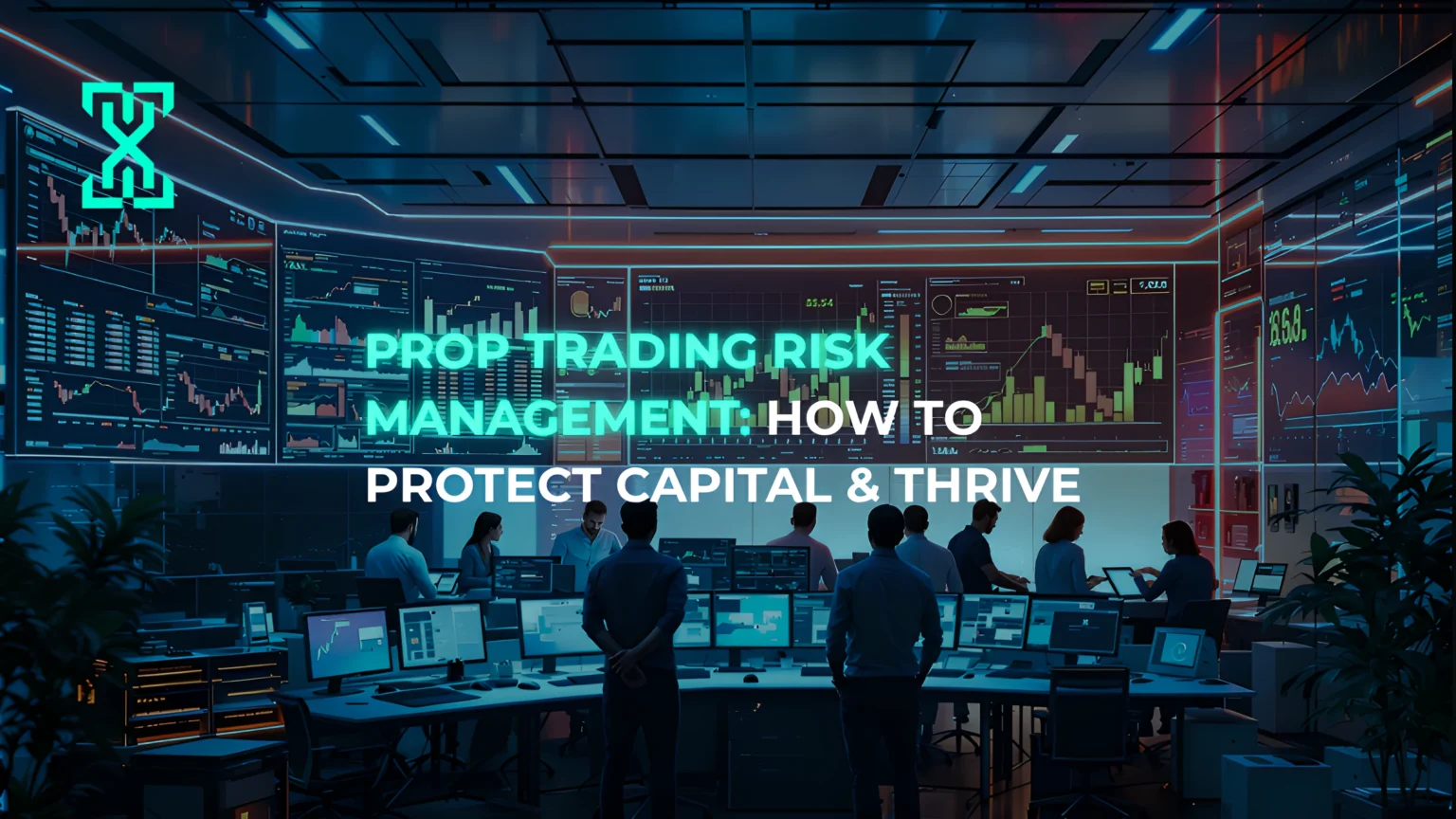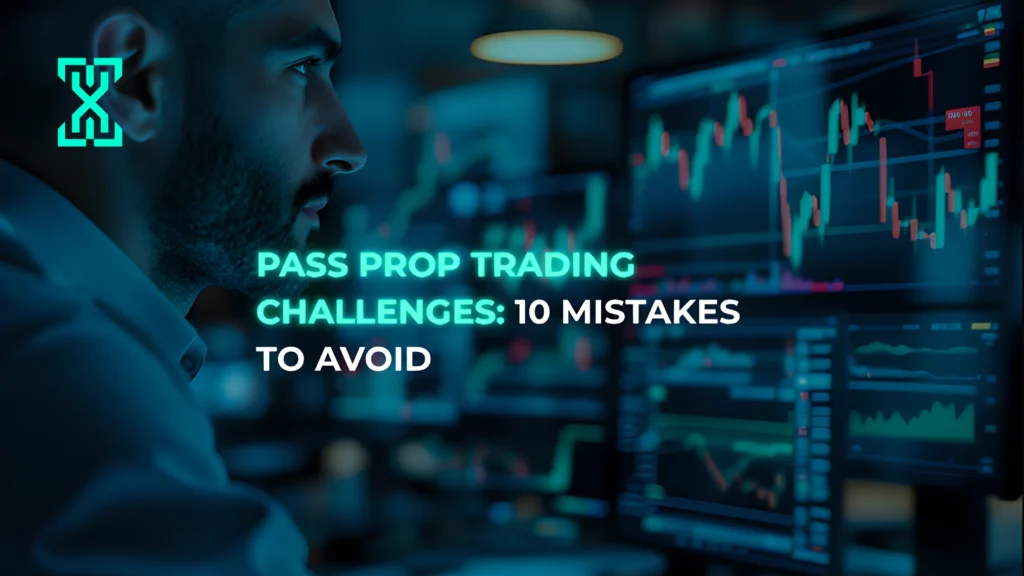Prop Trading Risk Management: How to Protect Capital & Thrive

Welcome, online traders! If you’re venturing into prop trading, mastering risk management isn’t optional it’s mission-critical. Proprietary trading offers the allure of trading with firm capital and potentially fast scaling, but it comes with strict rules, tight drawdown limits, and the unrelenting need for consistency. A single misstep can wipe out weeks of profit or even cost your funded account.
In this guide, we’ll break down everything you need to know to protect your capital, comply with firm requirements, and build a sustainable prop trading career. From position sizing and smart use of stop-loss orders, through dynamic risk adjustment, to leveraging tools like VaR, journaling, and real-time dashboards, you’ll learn how to stay disciplined, adaptable, and ahead of the curve.
We’ll also share a fresh perspective on how branding through risk discipline and even concepts like Hierarchical Risk Parity (HRP) can elevate your strategy. Expect actionable insights, examples, and visual ideas to help you internalize and apply these lessons. Ready to thrive in prop trading? Let’s dive in!
Why Risk Management Matters in Prop Trading
Prop firms enforce strict daily loss limits, drawdown thresholds, and consistency tests to protect their capital and ensure trader discipline. Unlike retail accounts, violating firm parameters, even in a winning streak can result in immediate termination of your funded account. That’s why capital preservation goes hand in hand with profitability.
These constraints mean that short-term gains don’t suffice. Long-term consistency is the name of the game. Overtrading, emotional decision-making, or ignoring firm rules may appear profitable in the short run, but they often lead to account shutdown.
Beyond firm rules, good risk management protects you from extreme market moves and margin stress remember the collapse of Archegos and other marginal events?
Taking a proactive approach builds trust with your prop firm. Firms that brand themselves on their rigorous risk controls attract better traders and enjoy greater longevity.
Core Risk Management Tools & Techniques
Position Sizing
Arguably the most foundational element. Limiting risk per trade typically between 1–5% of your account value, helps manage exposure and comply with firm drawdown rules.
For example: On a $100k account, a 2% risk = $2,000 max per trade. Always calculate position size considering stop-loss distance and risk percent.
Stop-Loss & Take-Profit Orders
Set stop-loss levels before entering trades to cap losses usually at 1% per trade or aligned to technical levels like support/resistance.
Take-profit orders help lock-in gains systematically, avoiding greed-induced reversals.
Leverage Moderation
Prop firms offer generous leverage, but unchecked, it can amplify losses. Use moderate leverage, especially during high volatility or novice phases.
Start with low ratios (e.g. 5:1 to 10:1) and only scale responsibly.
Risk Metrics and Monitoring Systems
Value at Risk (VaR)
VaR provides a quantifiable worst-case loss over a custom horizon. It forces firms to solidify risk frameworks, improve system rigor, and understand tail risks.
Drawdown & Daily Loss Limits
Use firm-imposed max drawdown (e.g., 5–10%) and daily stop-loss caps as mandatory thresholds. Staying within limits signals professional discipline.
Real-Time Risk Dashboards
Prop firms and traders rely on dashboards that track P&L, exposure, margin usage, and volatility. Technologies like automated monitors and analytics tools help avoid surprise breaches.
Voice of a trader on Reddit underscores this:
“Risk 0.75% if the setup is high probability. Risk 0.5% if it’s not A+ setup.” Reddit
Diversification and Strategy Mix
Avoid putting all your eggs in one basket. Diversify across asset classes, forex, futures, equities, commodities and trading styles like day trading, swing trading, and multi-timeframe setups.
For example, combining technical and fundamental approaches helps smooth out volatility-driven losses and unlock consistent edge.
Dynamic Risk Management
Rather than fixed risk, dynamic approaches adjust risk based on performance. For example: risk 2% per trade when winning; reduce to 1% after a loss; drop further to 0.5% after continued losses, only scale back up when profit recovers.
This strategy helps you survive losing streaks data shows clients endured up to 17 consecutive losses and stayed alive using dynamic risk rules, rather than busting out.
The Trading Plan & Discipline
A written trading plan, complete with entry/exit conditions, risk rules, and conditions for scaling or stopping, is non-negotiable. It helps eliminate emotional biases.
Documenting your rationale, entry logic, risk percentages, and emotional state in a trading journal allows objective review and evolution.
Technology, Automation & Audits
Firms investing in risk-first infrastructure, trader screening, pattern detection, and automation stand out. Thought leaders like Justin Hertzberg emphasize that risk must be central to identity-not just a backend concern.
Stress testing and ensuring liquidity resilience, including margin call simulations are critical. The FSB recommends liquidity buffers and automation for collateral management.
Unique Perspectives & Emerging Practices
Risk Discipline as Brand Value
Firms that market themselves on trust, transparency, and risk rigor attract better traders, and build long-term credibility.
Cutting-Edge Techniques: Hierarchical Risk Parity (HRP)
Emerging methods like HRP use graph theory and machine learning to optimize portfolios beyond traditional mean-variance models – especially valuable for diversified, multi-asset risk allocation.
Custom Visual Concepts
- Infographic – Risk Flowchart for Prop Traders
Visualize steps from trade idea → position sizing → stop setup → dynamic adjustment → journaling.
Alt text: “Infographic showing prop trading risk management flowchart from trade idea to journal.” - Chart – Dynamic Risk Progression Example
A graph showing account equity over a losing streak using static vs. dynamic risk sizing.
Alt text: “Chart comparing static vs dynamic risk management survival over losing streak in prop trading.” - Dashboard Mockup – Real-Time Risk Metrics
Dashboard sample with VaR, drawdown %, open loss, exposure by strategy, and alerts.
Alt text: “Mockup of real-time risk dashboard for prop trading firms showing VaR, drawdown, exposure.”
Quick Takeaways
- Capital preservation first – firm rules demand consistent, disciplined risk control.
- Use position sizing (1–5%), stop-loss, and moderate leverage to contain risk.
- Monitor key metrics like VaR, drawdown limits, and real-time exposure.
- Diversify strategies and markets to manage volatility.
- Adopt dynamic risk rules to weather losing streaks.
- Stick to a written trading plan, journal, and honest review.
- Leverage automation, stress tests, and screening for robustness.
- Differentiate your brand via risk discipline; consider advanced allocation tools like HRP.
Conclusion
Risk management is the backbone of any successful prop-trading journey. It’s not just about limiting losses, it’s about guaranteeing that you’re permitted to stay in the game long enough for your edge to show. By mastering position sizing, stop-loss discipline, and risk metrics like VaR and drawdowns, you’re building both resilience and credibility.
Adopting dynamic risk approaches helps you survive losing streaks, while a formal trading plan and journal keep emotions at bay. Firms that elevate risk as part of their identity attract better traders – and automation, stress testing, and real-time monitoring ensure you’re not blindsided by the next volatility wave.
Emerging frameworks like Hierarchical Risk Parity show how innovation can deepen your edge. Couple that with a mindset of discipline and adaptability, and you’ll be well-positioned not only to pass prop firm evaluations, but to scale and endure.
Ready to sharpen your risk game? Take inventory of your plan today – journal your trades, test your dashboard setup, and consider how dynamic sizing could boost your capital longevity. Your fund, and your consistency, will thank you.
FAQs
- What is an ideal risk percentage per trade in prop trading?
Answer: Typically between 1–2% of account equity per trade. For conservative or volatile scenarios, starting at 0.5–1% can help preserve capital during drawdowns. - How does dynamic risk management work?
Answer: It adjusts risk based on performance. For instance, risk 2% when performing well; after losses, reduce to 1%, then 0.5%; and gradually increase after recovering to protect your capital longer. - Why is a trading journal essential for prop traders?
Answer: It records entry logic, risk metrics, emotional state, and outcomes—helping you identify patterns, stick to your trading plan, and avoid repeating costly mistakes. - What risk metrics do prop firms monitor?
Answer: Core metrics include VaR, max drawdown, daily loss limits, exposure limits, and risk-reward ratios. These ensure trades stay within firm safety parameters. - Can risk management be a marketing advantage for prop firms?
Answer: Absolutely. Firms emphasizing robust risk infrastructure and transparency attract disciplined traders and build a reputation for reliability and longevity.
Our Latest Stories
Pass Prop Trading Challenges: 10 Mistakes to Avoid
Passing a prop trading challenge isn’t about flawless strategy; it’s about discipline,…
Trade Less, Earn More: Prop Trading Smarter, Not Harder
Do you feel like you have to trade every day just to…
Stay Informed,
Stay Ahead
Bookmark this blog to keep your edge sharp. Whether you're prepping for your first challenge or scaling into a six-figure funded account, our insights are here to help.


